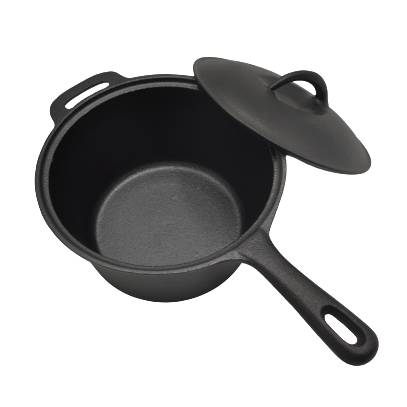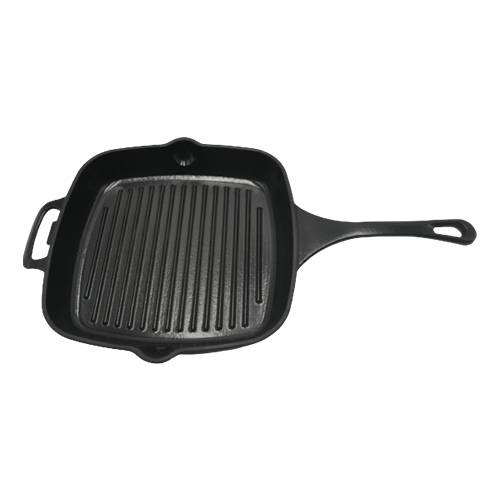I accept the JTA Privacy Policy.
By submitting the above I agree to the privacy policy and terms of use of JTA.org Best Iron Cookware

TAIPEI ( JTA ) — Asian-Jewish cuisine is a complex tapestry.
Jewish communities have existed across Asia for longer than many might assume, especially near major historical trade routes in places such as India, Singapore and Indonesia. Other communities developed during and after World War II. Some were part of or assimilated into local cultures, while others blended culinary traditions from other lands with the cuisines of their new homes.
So what do Jews in various parts of Asia eat on Hanukkah? Jews hailing from India, Singapore, Indonesia and Japan spoke to the Jewish Telegraphic Agency about some of their go-to holiday recipes.
Jeremy Freeman’s negi latkes use a type of onion native to China and grown across East Asia. (Jeremy Freeman)
Before moving to Japan with his wife, Maiko, five years ago, Jeremy Freeman was selling vintage Jamaican records in New York City. In fact, Maiko was the one with the restaurant — Oni Sauce, a Japanese home-style food stand in Brooklyn’s Smorgasburg market.
But when the two made the move to Tokyo with their kids, they decided to switch it up. Freeman’s Jewish background takes the stage at their Tokyo restaurant, Freeman’s Shokudo — specifically, the smoky side: Freeman’s specializes in smoked fish and meats with a rotating seasonal menu. They often dabble in Japanese-Jewish fusion, with offerings like the bialy (made on request by a local Japanese bakery) with whitefish salad made from smoked saba (mackerel), smoked daikon pickles and tobiko , or flying fish roe.
On Hanukkah, Freeman whips up these potato latkes made with negi, a type of onion native to China and grown across East Asia, that falls somewhere between a scallion and a leek. Negi has a stronger flavor than white onions typically used in latkes, and they also produce a lot less water, creating a batter that’s cleaner and easier to work with. At Freeman’s Shokudo, they’re topped with creme fraiche, tobiko, and ikura, or salmon roe.
Rosita Goldstein says Indonesian and Jewish cooking go hand in hand. (Rosita Goldstein)
Rosita Goldstein’s Saturday morning Shabbat meals have become something of a local legend among Singapore’s Jewish community. Twice a month for a decade, she hosted anywhere from 30 to 100 community members at her home, where she prepared abundant spreads of Jewish and Indonesian classics now memorialized in a cookbook .
Goldstein, who is originally from Indonesia and converted to Judaism after meeting her husband, Harvey, in Singapore, says culinary traditions from Indonesia meld easily with kashrut, or Jewish culinary rules.
“A lot of recipes don’t use pork,” she said. “And then second of all, in the Jewish tradition, we don’t mix meat and dairy, and it’s very easy, because in most of Indonesian food, we use coconut milk.”
Life is a little slower now for the Goldsteins, who recently moved to Virginia and hope to split their time between the United States and Singapore. On Hanukkah, these deep-fried Indonesian corn fritters, served best with sour cream and sweet chili sauce, are a family favorite. In Indonesia, they’re a popular street food, but they are also a nod to the Hanukkah custom of frying in lots of oil.
2 cups fresh or frozen corn kernels
1/2 cup thinly sliced spring onion
Oil, enough to deep fry the corn fritters.
White ground pepper, and salt to taste.
Esther David serves her vegetable patties with coriander chutney on Hanukkah. (Esther David)
According to legend, the Bene Israel trace their beginnings in India to a shipwreck on the country’s west coast over 2,000 years ago. When British rule began in 1858, they came to Gujarat, a state on the coast and embraced local life there while maintaining their Jewish identity, leading to the formation of unique customs and culinary traditions.
Esther David is a Bene Israel Jew who grew up in Gujarat and writes about the Jewish Indian experience in her novels. Her most recent book, “ Bene Appetit ,” recounts the diverse traditions and cuisines of India’s five Jewish groups — traditions she says are quickly being forgotten due to modernization and immigration.
At Hanukkah, fried vegetable patties or fritters are traditional, usually served alongside carrot halva . David likes to serve the fritters with coriander chutney.
Eggs, breadcrumbs, flour and oil for frying
1 small bunch fresh coriander leaves
Clean and finely chop the coriander, mint leaves and green chili. Mix with the grated coconut, sugar and salt. Process in a mixer and serve with the patties.
Brod goreng means “fried bread” in Indonesian. (Screenshot from YouTube/Beqs Kitchen)
The Jewish community in North Sulawesi, Indonesia, might be one of the smallest in all of Asia. Made up mostly of descendants of Dutch Jews who came to Indonesia with the Dutch East India Company in the 17th century, the population has declined over time as Jews have attempted to assimilate amid an environment that is not always welcoming to them. In 2013, a historical Dutch synagogue in Surabaya, on the island of Java, was demolished by a real estate developer following protests by Islamic groups.
Yaakov Baruch, the rabbi for North Sulawesi’s community, is a descendant of both Dutch Jews and Holocaust survivors. He shared a recipe for brod goreng, a sweet fried bread for Hanukkah.
A Dutch-Indonesian culinary creation, brod goreng was only eaten in areas where Dutch Jews were living, Baruch said. “The Jews combined the culinary [traditions] between European and local Indonesian food, since this food is closer with sufgiyanot,” he said. “So the Jews in this country always prepare this ‘brod goreng’ next to our Menorah during Hanukkah.”
5 tbsp sugar (you can add more if you like it sweet)
I accept the JTA Privacy Policy.

Cast Iron Grill Pan By submitting the above I agree to the privacy policy and terms of use of JTA.org